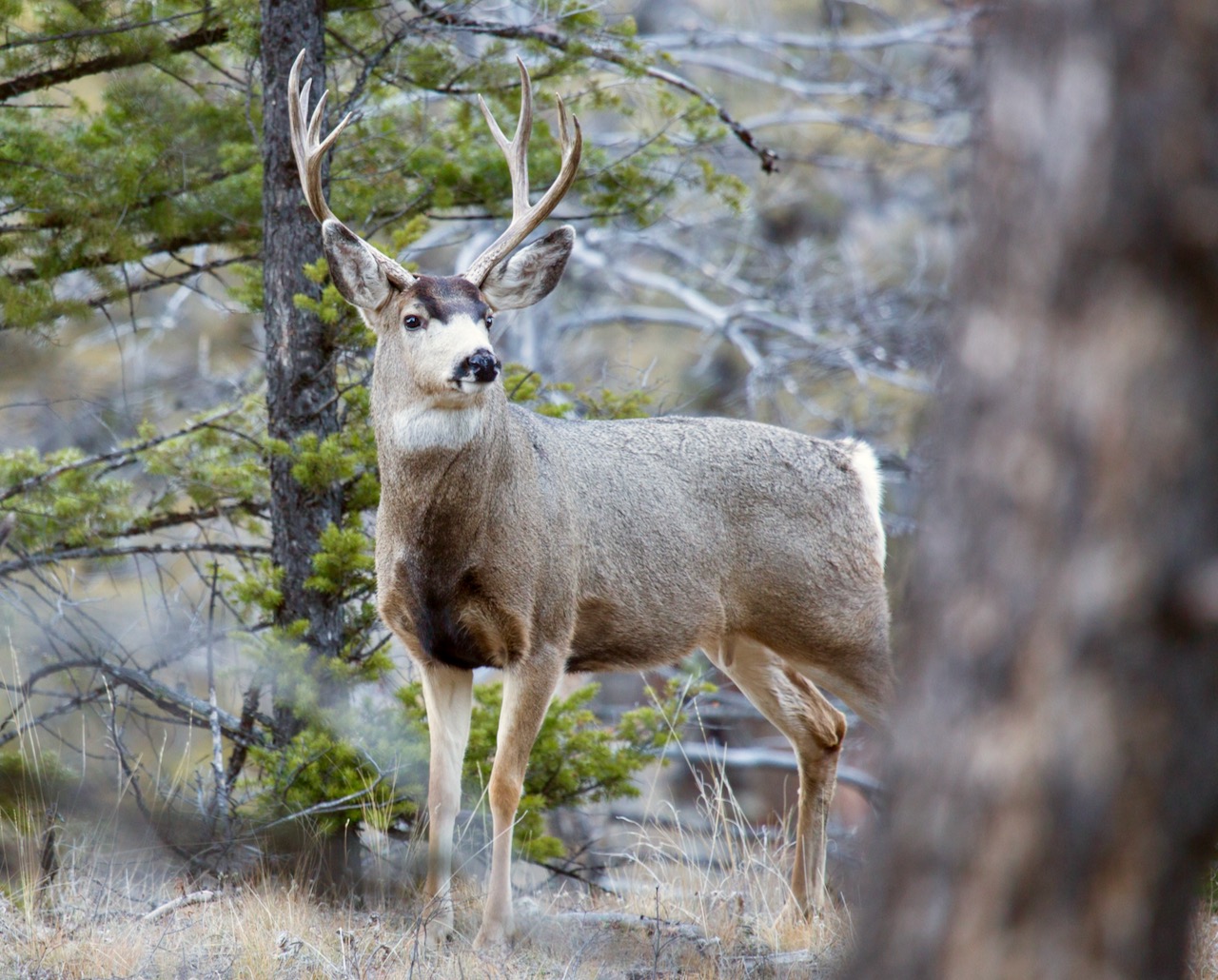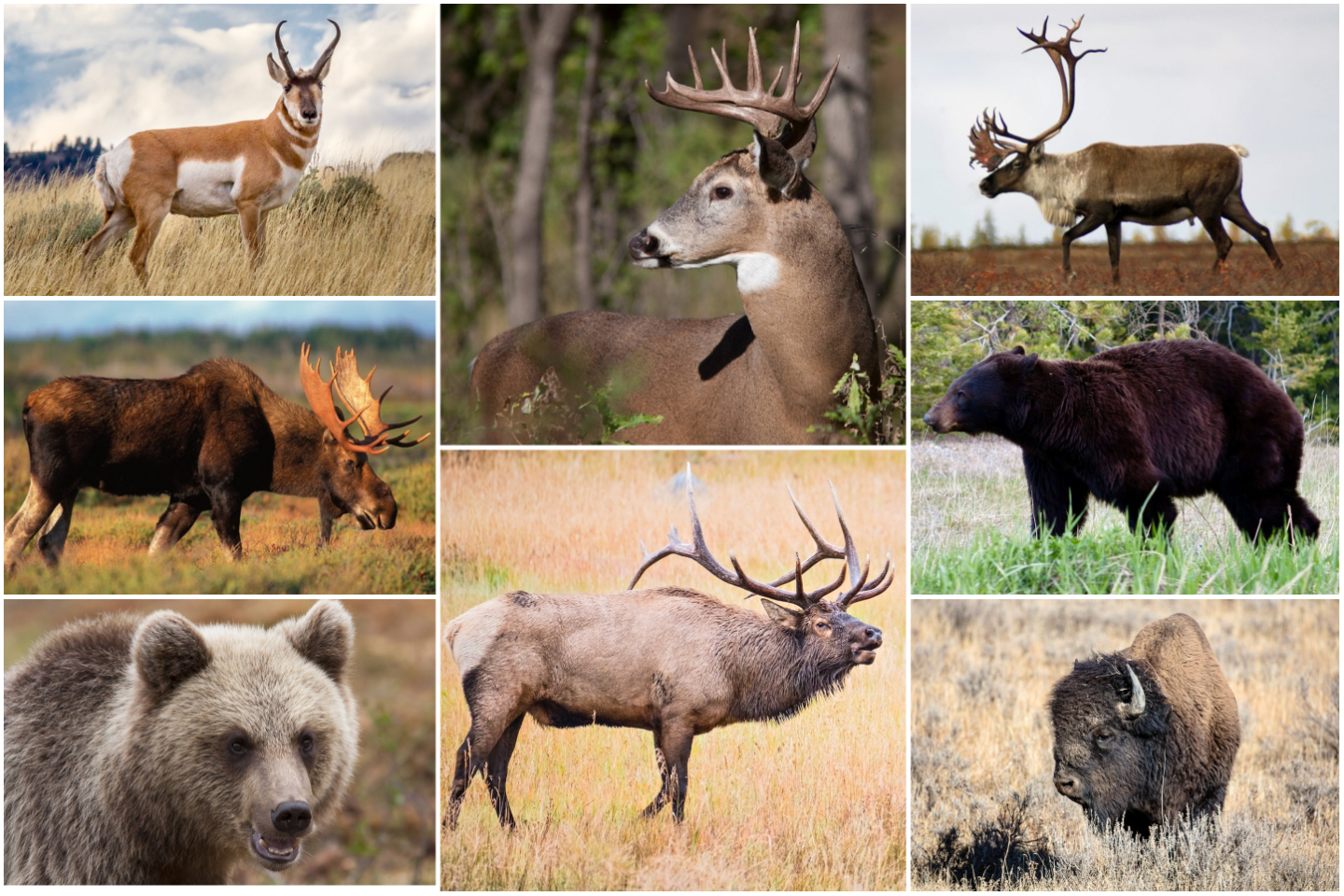THE HUNTS AHEAD
Our exclusive annual province-by-province breakdown of Canada’s hottest big-game hunting spots
Advertisement

BRITISH COLUMBIA
Both humans and wildlife in B.C. had a lot to contend with in 2021. Weather extremes included record summer highs, a massive wildfire season and extensive flooding from record rainfall. On top of that, the past winter was cold, snowy and long. With all those challenges, the year-to-year carry-over of B.C.’s big-game species will have been average at best.
BISON
Advertisement
For hunters looking for an adventurous hunt, there are fall and winter opportunities for bison in the Peace Region. The populations are stable, but this hunt is not a slam dunk. The country is rough, and the weather can be snowy and very cold, so only the best-prepared hunters are likely to tag B.C.’s largest ungulate.
BLACK BEARS
There is currently a ban on hunting grizzlies in B.C., but black bear hunters have been doing well. With some ungulate populations down and non-resident hunters absent due to travel restrictions, resident hunters turned their attention to black bears during the pandemic. For example, the 2020 harvest surpassed that of 2019, which had been the highest on record. Hunters are finding bears right across the province, but the Vancouver Island, Kamloops and Omineca Regions report the largest harvests.
Advertisement
CARIBOU
For the past 10 years, the annual hunter harvest of caribou has been fairly consistent at about 100 animals. However, B.C.’s caribou herds are stable at best, and many are in decline, often resulting in new regulations and some closures each year. This season is no different and changes are likely, particularly in the Omineca and Peace Regions.
ELK
For elk hunters, the news is really good. There are elk in all regions, with populations stable or increasing. In the agricultural zones, the strategy has been to manage elk numbers to reduce conflicts. Outside of those particular areas, though, the animals are doing fine. The Peace and Kootenay Regions are still the leaders in harvest numbers, but Vancouver Island and the Lower Mainland are producing some massive Roosevelt bulls. There have also been plenty of smiling elk hunters in the Okanagan and Omineca Regions.
MOOSE
The Omineca and Cariboo Regions in the centre of the province have traditionally supported some of the highest moose densities in North America. However, the past 20 years have seen numbers in that area decline significantly. With tightened regulations, including access management, it appears the bottom has been reached and there are now signs of the population recovering. Elsewhere in the province, moose numbers are holding their own, with no dramatic shifts up or down. However, hunters in northeastern B.C. need to check the regulations for significant changes, which were being proposed at press time
MOUNTAIN GOATS
he province is home to more than half the world’s population of mountain goats, with the largest number found in the mountains in the northwest. Goat numbers in that region are considered stable, but elsewhere in B.C. the picture is less rosy. Some areas have been changed to a draw from an open season, while hunting has been closed altogether in others. Where hunting is permitted, however, hunters continue to score, with the provincial harvest remaining fairly steady at 300 goats a year for the past five years.
MOUNTAIN SHEEP
The two species of mountain sheep in B.C. offer significantly different prospects for hunters. In the southern half of the province, bighorn numbers are down significantly, and hunters may have to wait years for an opportunity. In northern B.C., meanwhile, thinhorn sheep are doing well, and hunters who venture into the rugged mountain habitat typically bring home big rams.
MULE DEER
Mulies continue to be B.C.’s most popular big-game animal, although some populations have struggled in recent years. Tightened regulations appear to be paying off, though, and while harvests levels haven’t matched the glory years of the 1980s, numbers are stable or rising across the species’ range. This is shaping up to be another decent, if not spectacular, hunting season.
WHITE-TAILED DEER
Whitetails have been expanding their range westward from the traditional strongholds of the Peace, Kootenay and Okanagan Regions. Hunters in the Kamloops and Cariboo Region now have a decent chance to cut a whitetail tag close to home, while overall the number of whitetail hunters in the province is increasing. The most recent peak harvest was in 2015, with the 10-year average harvest remaining quite consistent at approximately10,000 deer a year. Whitetails have high reproductive potential, so even after a bad winter like the most recent one, populations recover quickly. So, the hunting prospects look pretty good for this fall.

